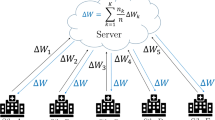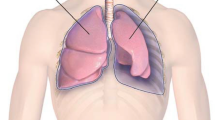Abstract
A chest X-ray radiography is still the global standard for diagnosing pneumonia. Despite several studies, doctors still have trouble correctly diagnosing and classifying pneumonia. Neural architecture search (NAS) has the potential to enhance diagnostic efficiency and accuracy. However, NAS methods fail to account for the security of data sources, and the result of model prediction cannot be communicated safely and consistently. To tackle these issues, we propose a trustworthy NAS method for pneumonia image classification using blockchain technology, which provides secure, reliable, and high-performance model automatic search and efficient data prediction capabilities. By synergistically combining NAS with blockchain technology, we enhance the transparency and interpretability of NAS-driven image classification processes, thereby safeguarding the confidentiality and integrity of sensitive medical information. Moreover, our approach automates the model construction process for pneumonia image classification, markedly reducing the reliance on manual intervention. Experimental results demonstrate that our method achieves comparable performance to state-of-the-art methods for pneumonia image classification while ensuring security. This provides a new solution for promoting medical aided diagnosis.








Similar content being viewed by others
Data Availability
The data and material that have been used in this article are cited with references at their respective place.
Change history
10 November 2023
A Correction to this paper has been published: https://doi.org/10.1007/s11227-023-05760-9
References
He K, Zhang X, Ren S, Sun J (2016) Identity mappings in deep residual networks. In: European conference on computer vision 630–645. https://doi.org/10.1007/978-3-319-46493-0_38
Zhu Y, Newsam S (2017) Densenet for dense flow. In: 2017 IEEE International Conference on Image Processing (ICIP), pp 790–794. https://doi.org/10.1109/ICIP.2017.8296389
Zoph B, Le Q (2017) Neural architecture search with reinforcement learning. In: International Conference on Learning Representations. https://openreview.net/forum?id=r1Ue8Hcxg
Real E, Moore S, Selle A, Saxena S, Suematsu YL, Tan J, Le QV, Kurakin A (2017) Large-scale evolution of image classifiers. In: Proceedings of the 34th International Conference on Machine Learning, pp 2902–2911. https://proceedings.mlr.press/v70/real17a.html
Liu H, Simonyan K, Yang Y (2019) DARTS: Differentiable architecture search. In: International Conference on Learning Representations. https://openreview.net/forum?id=S1eYHoC5FX
Wright DCS (2008) Bitcoin: a peer-to-peer electronic cash system. Available at SSRN 3440802:21260. https://doi.org/10.2139/ssrn.3440802
Moeslund TB, Hilton A, Krüger V (2006) A survey of advances in vision-based human motion capture and analysis. Comput Vis Image Underst 104(2–3):90–126. https://doi.org/10.1016/j.cviu.2006.08.002
Hathaliya JJ, Tanwar S, Tyagi S, Kumar N (2019) Securing electronics healthcare records in healthcare 4.0: a biometric-based approach. Comput Electr Eng 76:398–410. https://doi.org/10.1016/j.compeleceng.2019.04.017
Szabo N (1997) Formalizing and securing relationships on public networks. First Monday 2(9). https://doi.org/10.5210/fm.v2i9.548
Tanwar S, Parekh K, Evans R (2020) Blockchain-based electronic healthcare record system for healthcare 4.0 applications. J Inf Secur Appl 50:102407. https://doi.org/10.1016/j.jisa.2019.102407
Almaiah MA, Hajjej F, Ali A, Pasha MF, Almomani O (2022) A novel hybrid trustworthy decentralized authentication and data preservation model for digital healthcare IoT based cps. Sensors. https://doi.org/10.3390/s22041448
Almaiah MA, Ali A, Hajjej F, Pasha MF, Alohali MA (2022) A lightweight hybrid deep learning privacy preserving model for fc-based industrial internet of medical things. Sensors. https://doi.org/10.3390/s22062112
Pilozzi A, Huang X (2020) Overcoming alzheimer’s disease stigma by leveraging artificial intelligence and blockchain technologies. Brain Sci 10(3):183. https://doi.org/10.3390/brainsci10030183
Kumar R, Wang W, Kumar J, Yang T, Khan A, Ali W, Ali I (2021) An integration of blockchain and AI for secure data sharing and detection of CT images for the hospitals. Comput Med Imaging Graph 87:101812. https://doi.org/10.1016/j.compmedimag.2020.101812
Khatoon A (2020) A blockchain-based smart contract system for healthcare management. Electronics 9(1):94. https://doi.org/10.3390/electronics9010094
Wang L, Lin ZQ, Wong A (2020) Covid-net: a tailored deep convolutional neural network design for detection of covid-19 cases from chest X-ray images. Sci Rep 10(1):1–12. https://doi.org/10.1038/s41598-020-76550-z
Al-Falluji RA, Katheeth ZD, Alathari B (2021) Automatic detection of covid-19 using chest X-ray images and modified resnet18-based convolution neural networks. Comput Mater Contin. https://doi.org/10.32604/cmc.2020.013232
Garg A, Salehi S, La Rocca M, Garner R, Duncan D (2022) Efficient and visualizable convolutional neural networks for Covid-19 classification using chest CT. Expert Syst Appl 195:116540. https://doi.org/10.1016/j.eswa.2022.116540
Ozturk T, Talo M, Yildirim EA, Baloglu UB, Yildirim O, Acharya UR (2020) Automated detection of covid-19 cases using deep neural networks with X-ray images. Comput Biol Med 121:103792. https://doi.org/10.1016/j.compbiomed.2020.103792
Abbas A, Abdelsamea MM, Gaber MM (2021) Classification of Covid-19 in chest x-ray images using detrac deep convolutional neural network. Appl Intell 51(2):854–864. https://doi.org/10.1007/s10489-020-01829-7
Luz E, Silva P, Silva R, Silva L, Guimarães J, Miozzo G, Moreira G, Menotti D (2022) Towards an effective and efficient deep learning model for Covid-19 patterns detection in X-ray images. Res Biomed Eng 38(1):149–162. https://doi.org/10.1007/s42600-021-00151-6
Montalbo FJP (2021) Diagnosing Covid-19 chest X-rays with a lightweight truncated densenet with partial layer freezing and feature fusion. Biomed Signal Process Control 68:102583. https://doi.org/10.1016/j.bspc.2021.102583
Krizhevsky A, Sutskever I, Hinton GE (2012) Imagenet classification with deep convolutional neural networks. Adv Neural Inf Process Syst. https://doi.org/10.1145/3065386
Li B, Lu Q, Jiang W, Jung T, Shi Y (2022) A collaboration strategy in the mining pool for proof-of-neural-architecture consensus. Blockchain Res Appl 3(4):100089. https://doi.org/10.1016/j.bcra.2022.100089
Zoph B, Vasudevan V, Shlens J, Le QV (2018) Learning transferable architectures for scalable image recognition. In: Proceedings of the IEEE Conference on Computer Vision and Pattern Recognition (CVPR)
Real E, Aggarwal A, Huang Y, Le QV (2019) Regularized evolution for image classifier architecture search. Proc AAAI Conf Artif Intell 33(01):4780–4789. https://doi.org/10.1609/aaai.v33i01.33014780
Chen X, Xie L, Wu J, Tian Q (2019) Progressive differentiable architecture search: Bridging the depth gap between search and evaluation. In: Proceedings of the IEEE/CVF International Conference on Computer Vision. Seoul, Korea, pp 1294–1303
Xie L, Yuille A (2017) Genetic cnn. In: Proceedings of the IEEE International Conference on Computer Vision. Venice, Italy, pp 1379–1388
Wang W, Zhang X, Cui H, Yin H, Zhang Y (2023) Fp-darts: fast parallel differentiable neural architecture search for image classification. Pattern Recogn 136:109193. https://doi.org/10.1016/j.patcog.2022.109193
Qin S, Zhang Z, Jiang Y, Cui S, Cheng S, Li Z (2023) Ng-nas: node growth neural architecture search for 3d medical image segmentation. Comput Med Imag Graph. https://doi.org/10.1016/j.compmedimag.2023.102268
Feng Q, He D, Zeadally S, Khan MK, Kumar N (2019) A survey on privacy protection in blockchain system. J Netw Comput Appl 126:45–58. https://doi.org/10.1016/j.jnca.2018.10.020
Lin C, He D, Huang X, Khan MK, Choo K-KR (2020) Dcap: a secure and efficient decentralized conditional anonymous payment system based on blockchain. IEEE Trans Inf Forensics Secur 15:2440–2452. https://doi.org/10.1109/TIFS.2020.2969565
Zhang G-Z, Deng Y-J, Xie Q-Q, Ren E-H, Ma Z-J, He X-G, Gao Y-C, Kang X-W (2020) Sirtuins and intervertebral disc degeneration: roles in inflammation, oxidative stress, and mitochondrial function. Clin Chim Acta 508:33–42. https://doi.org/10.1016/j.cca.2020.04.016
Christidis K, Devetsikiotis M (2016) Blockchains and smart contracts for the internet of things. Ieee Access 4:2292–2303. https://doi.org/10.1109/ACCESS.2016.2566339
Dinh TTA, Wang J, Chen G, Liu R, Ooi BC, Tan K-L (2017) Blockbench: a framework for analyzing private blockchains. In: Proceedings of the 2017 ACM International Conference on Management of Data, pp 1085–1100. https://doi.org/10.1145/3035918.3064033
Linn LA, Koo MB, et al (2016) Blockchain for health data and its potential use in health it and health care related research. ONC/NIST Use of Blockchain for Healthcare and Research Workshop. Gaithersburg, Maryland, United States: ONC/NIST 1–10
Azaria A, Ekblaw A, Vieira T, Lippman A (2016) Medrec: using blockchain for medical data access and permission management. In: 2016 2nd International Conference on Open and Big Data (OBD). IEEE, pp 25–30. https://doi.org/10.1109/OBD.2016.11
Ozsoy A, Gezici B, Bölücü N, Bölücü N (2020) Blockchain technology applications in government. Cross-Ind Use Blockchain Technol Oppor Future. https://doi.org/10.4018/978-1-7998-3632-2.ch003
Muralidharan S, Ko H (2019) An interplanetary file system (ipfs) based IoT framework. In: 2019 IEEE International Conference on Consumer Electronics (ICCE). IEEE, pp 1–2. https://doi.org/10.1109/ICCE.2019.8662002
Zhu L, Dong H, Shen M, Gai K (2019) An incentive mechanism using shapley value for blockchain-based medical data sharing. In: 2019 IEEE 5th Intl Conference on Big Data Security on Cloud (BigDataSecurity), IEEE Intl Conference on High Performance and Smart Computing, (HPSC) and IEEE Intl Conference on Intelligent Data and Security (IDS), pp 113–118. https://doi.org/10.1109/BigDataSecurity-HPSC-IDS.2019.00030
Liu J, Li X, Ye L, Zhang H, Du X, Guizani M (2018) Bpds: a blockchain based privacy-preserving data sharing for electronic medical records. In: 2018 IEEE Global Communications Conference (GLOBECOM). IEEE, pp 1–6. https://doi.org/10.1109/GLOCOM.2018.8647713
Eltayieb N, Sun L, Wang K, Li F (2019) A certificateless proxy re-encryption scheme for cloud-based blockchain. In: International Conference on Frontiers in Cyber Security. Springer, pp 293–307. https://doi.org/10.1007/978-981-15-0818-9_19
Kim H, Kim S-H, Hwang JY, Seo C (2019) Efficient privacy-preserving machine learning for blockchain network. Ieee Access 7:136481–136495. https://doi.org/10.1109/ACCESS.2019.2940052
Fu Y, Yu FR, Li C, Luan TH, Zhang Y (2020) Vehicular blockchain-based collective learning for connected and autonomous vehicles. IEEE Wirel Commun 27(2):197–203. https://doi.org/10.1109/MNET.001.1900310
Malik H, Anees T, Din M, Naeem A (2023) Cdc_net: multi-classification convolutional neural network model for detection of Covid-19, pneumothorax, pneumonia, lung cancer, and tuberculosis using chest x-rays. Multimed Tools Appl 82(9):13855–13880. https://doi.org/10.1007/s11042-022-13843-7
Abubeker KM, Baskar S (2023) B2-net: an artificial intelligence powered machine learning framework for the classification of pneumonia in chest X-ray images. Mach Learn Sci Technol 4(1):015036. https://doi.org/10.1088/2632-2153/acc30f
Sait U, Lal K, Prajapati S, Bhaumik R, Kumar T, Sanjana S, Bhalla K (2020) Curated dataset for covid-19 posterior-anterior chest radiography images (X-rays). Mendeley Data 1:1. https://doi.org/10.17632/9xkhgts2s6.1
Krizhevsky A, Hinton G, et al (2009) Learning multiple layers of features from tiny images
Chowdhury MEH, Rahman T, Khandakar A, Mazhar R, Kadir MA, Mahbub ZB, Islam KR, Khan MS, Iqbal A, Emadi NA, Reaz MBI, Islam MT (2020) Can AI help in screening viral and Covid-19 pneumonia? IEEE Access 8:132665–132676. https://doi.org/10.1109/ACCESS.2020.3010287
Rahman T, Khandakar A, Qiblawey Y, Tahir A, Kiranyaz S, Abul Kashem SB, Islam MT, Al Maadeed S, Zughaier SM, Khan MS, Chowdhury MEH (2021) Exploring the effect of image enhancement techniques on Covid-19 detection using chest X-ray images. Comput Biol Med 132:104319. https://doi.org/10.1016/j.compbiomed.2021.104319
Borkowski AA, Bui MM, Thomas LB, Wilson CP, DeLand LA, Mastorides SM (2019) Lung and colon cancer histopathological image dataset (lc25000). arXiv preprint arXiv:1912.12142
Funding
This work was supported by the Natural Science Foundation of Gansu Province, grant number No.22JR11RA042. We would like to thank the Editor-in-Chief for handling our paper. We would also like to thank the reviewers for their time and effort in providing constructive suggestions for our paper.
Author information
Authors and Affiliations
Contributions
YY was involved in development or design of methodology, designing computer programs, implementation of the computer code and supporting algorithms and preparation, creation and presentation of the published work, and specifically writing the initial draft. JW and ZY was involved in preparation, creation, and presentation of the published work by those from the original research group, specifically critical review, commentary, or revision. RZ was involved in oversight and leadership responsibility for the research activity planning and execution, including mentorship external to the core team.
Corresponding authors
Ethics declarations
Conflict of interest
The authors declare that they have no conflict of interest.
Consent to publish
All authors consent to publication.
Ethical approval
This work does not involve any work related to ethics.
Additional information
Publisher's Note
Springer Nature remains neutral with regard to jurisdictional claims in published maps and institutional affiliations.
“The original online version of this article was revised: ” In this article the statement in the Funding information section was incorrectly given as '22JR1RA042' and should have read '22JR11RA042'. The original article has been corrected.
Rights and permissions
Springer Nature or its licensor (e.g. a society or other partner) holds exclusive rights to this article under a publishing agreement with the author(s) or other rightsholder(s); author self-archiving of the accepted manuscript version of this article is solely governed by the terms of such publishing agreement and applicable law.
About this article
Cite this article
Yang, Y., Wei, J., Yu, Z. et al. A trustworthy neural architecture search framework for pneumonia image classification utilizing blockchain technology. J Supercomput 80, 1694–1727 (2024). https://doi.org/10.1007/s11227-023-05541-4
Accepted:
Published:
Issue Date:
DOI: https://doi.org/10.1007/s11227-023-05541-4




